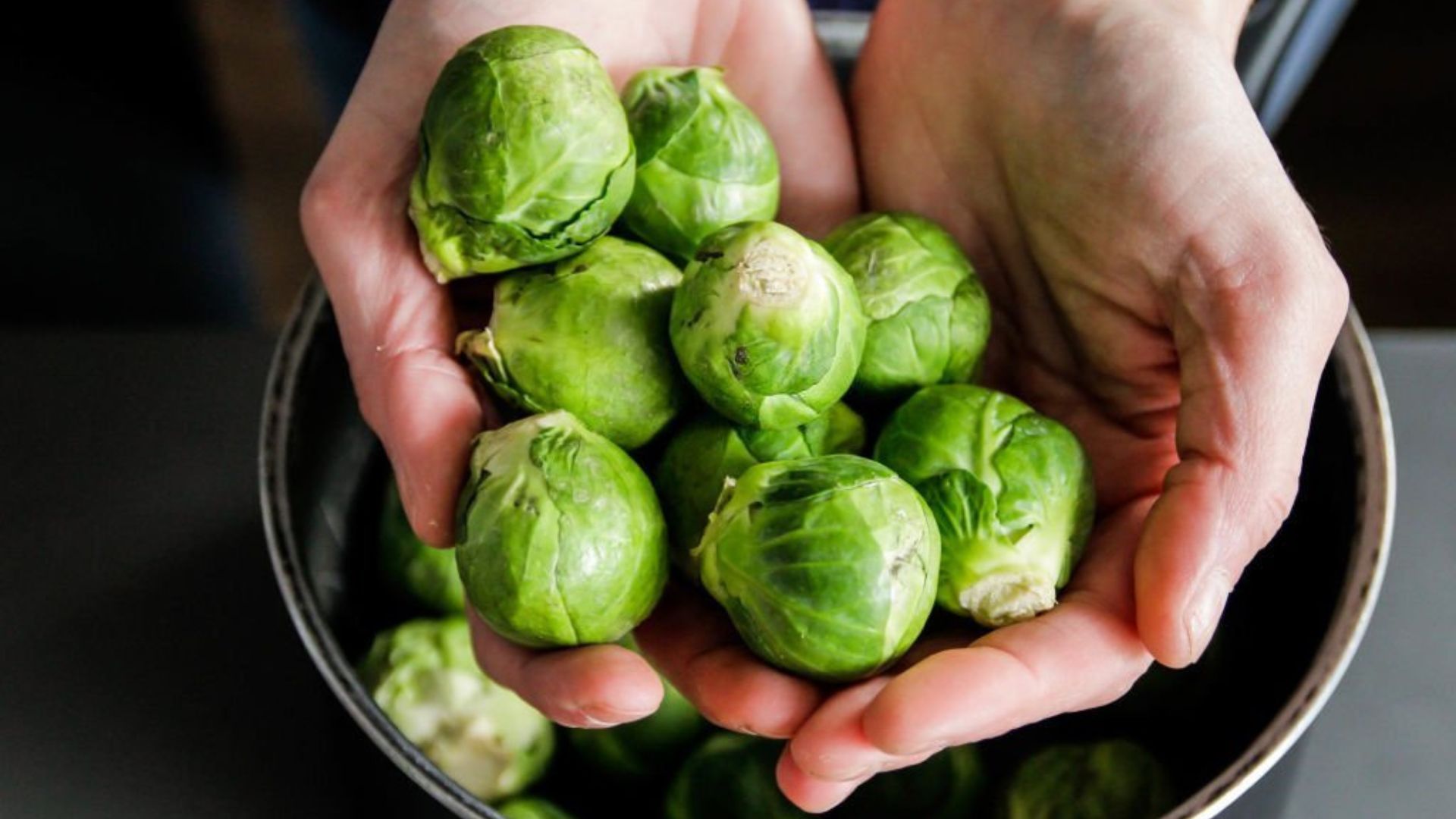
The Climatarian Diet: Eating for a Healthier Planet
The Climatarian Diet is an increasingly popular way of eating that focuses on reducing the environmental impact of our food choices. By focusing on a combination of vegan, vegetarian, and sustainable animal-based options, the diet is designed to reduce the amount of greenhouse gases produced in the production of the food we eat. By choosing foods that have a lower environmental impact, the Climatarian Diet is an effective way to help protect our planet.
What is a Climatarian Diet and How Does it Help the Planet?
The Climatarian Diet is the newest and hippest way to help the planet — and it tastes great! It’s a diet that focuses on reducing the environmental impact of what you eat. That means eating organic, local, and seasonal produce, as well as reducing your meat and dairy consumption. This can help reduce your carbon footprint by reducing the amount of resources used to produce and process the food you eat. Plus, the delicious variety of fruits and veggies that make up the Climatarian Diet will have you feeling healthier and more energized. So, if you’re looking for an easy way to help the planet, look no further than the Climatarian Diet. Bon Appetit!
The Benefits of Eating a Climatarian Diet
Are you looking for a diet that’s not only good for your health, but also for the planet? Look no further than the climatarian diet! The climatarian diet is an eating plan that focuses on reducing your carbon footprint by eating only locally-grown, seasonal foods. And the best part? It’s absolutely delicious!
If you’re wondering what the heck a climatarian diet is, let us explain. A climatarian diet is all about eating food that’s in season and grown locally. That means no more tomatoes in the winter, and no more mangoes in the summer. Instead, you’ll be able to enjoy fresh, delicious, and sustainable produce year-round!
The benefits of eating a climatarian diet are numerous. Not only is it healthier, but it’s also better for the environment. Eating locally-grown foods reduces your carbon footprint, since you’re not importing food from overseas. And, since seasonal foods are usually fresher, they contain more nutrients than non-seasonal foods. Plus, you’ll be supporting your local farmers and businesses, which is always a plus!
So, why should you give the climatarian diet a try? Well, for starters, it’s a lot tastier than it sounds! Eating locally-grown seasonal food means you’ll be able to enjoy a variety of fresh, flavorful fruits and vegetables. And, since you’ll be eating more plant-based foods, you’ll be getting more vitamins and minerals than you would with a traditional diet.
So, if you’re looking for a diet that’s good for your health and the planet, the climatarian diet might be for you. Not only will you be eating delicious seasonal foods, but you’ll also be helping to reduce your carbon footprint. So, what are you waiting for? Get ready to enjoy all the delicious benefits of a climatarian diet!
How to Begin a Climatarian Diet
So you’ve decided to take the plunge and become a climatarian! As you may know, a climatarian is someone who follows a diet that seeks to reduce the environmental impact of their food choices. It’s not only an easy way to reduce your carbon footprint, but it’s also a great opportunity to explore new and exciting dishes by eating more seasonal and locally sourced food. Here are some tips to help you get started on your climatarian journey:
Start by taking inventory of what’s already in your kitchen. Get familiar with the ingredients you have on hand and find out what local and seasonal produce is available in your area.
Get creative in the kitchen. Explore new dishes and recipes that use seasonal and local ingredients.
Make a shopping list. Don’t be afraid to try new foods like beans, lentils, and grains, as these are all great sources of protein that are much more sustainable than meat.
Make sure you do your research. Read up on sustainable farming practices, find out what foods are in season and which ones are shipped in from far away.
Eat out with a purpose. When you’re eating out, look for restaurants that prioritize local and seasonal ingredients.
Ask questions. Don’t be afraid to ask your local grocery store or restaurant about their ingredients and sourcing.
Educate yourself. Learning about the environmental impact of different foods is a great way to stay motivated and make informed choices.
Starting a climatarian diet isn’t as daunting as it may seem. Just remember to take it one step at a time, be creative in the kitchen, and don’t be afraid to ask questions. Good luck and happy eating!
Common Challenges of Eating a Climatarian Diet
The “Where’s the Beef?” Challenge: Eating a climatarian diet means you’re going to be ditching the traditional steak dinner. You’ll be saying goodbye to your beloved hamburgers and hello to a veggie-filled plate. Don’t worry, you won’t miss out on flavor, since there are plenty of delicious plant-based recipes out there.
The “I’m so Bored” Challenge: A climatarian diet is centered around eating seasonal, local, and sustainable foods, which means you can’t always rely on the same meals day in and day out. This can make it difficult to maintain a diverse and exciting diet. But don’t despair! There are plenty of ways to get creative in the kitchen.
The “It’s So Expensive” Challenge: Eating a climatarian diet means you’ll be spending more on groceries. It’s important to remember that you’re investing in your health, the health of the planet, and the health of future generations. Plus, you can save money in the long run by growing your own food and cutting back on packaged and processed foods.
Tips for Eating Locally on a Climatarian Diet
Get creative with your cooking! Try out some vegetarian recipes made with local ingredients like seasonal fruits and veggies. Think of it as a fun experiment – you never know what delicious creation you’ll come up with!
Support your local farmers! Check out your local farmers’ market or join a community-supported agriculture (CSA) program to get fresh, locally-sourced produce.
Make new friends! Get to know your local farmers and try out their recipes. Who knows? You might find a new favorite dish!
Get creative with your grocery shopping! Hit up stores that specialize in local produce or shop for local products online.
Go foraging! Foraging for wild foods can be a fun and educational experience. Plus, you’ll be sure to get some unique ingredients that you can’t find anywhere else.
Don’t forget about the other parts of your diet! Eating local doesn’t just mean produce – you can acquire locally-made breads, cheeses, and other products.
Make it a game! Challenge yourself to see how many local ingredients you can incorporate into a single meal.
Get creative with your meat-free meals! Eating vegetarian and vegan is a great way to eat locally and sustainably.
Best Recipes for a Climatarian Diet
The Clima-Taco: A delicious taco seasoned with spices that are native to your region and filled with locally-sourced vegetables like peppers, onions, and tomatoes. Top it off with a vegan-friendly sauce for a tasty and nutritious meal.
The Green Smoothie Bowl: Start your day off on the right foot with a green smoothie bowl! Blend your favorite fruits and veggies with a plant-based milk, top it off with some crunchy nuts or seeds, and enjoy!
The Quinoa Bowl: Quinoa is a great source of protein and fiber and is perfect for a healthy and filling meal. Mix it up with some vegetables, nuts, and seeds for a flavorful dish.
The Power Salad: Make a nutrient-packed salad with beans, nuts, and greens and top it off with a tangy dressing.
The Lentil Burger: Lentils are an excellent plant-based source of protein and make for a delicious burger. Top it off with some cheese, tomato and lettuce for a tasty and healthy meal.
The Zucchini Noodle Bowl: Replace pasta noodles with zucchini noodles for a low-carb and delicious meal. Toss in some veggies, nuts, and a flavorful sauce for a nutritious and hearty meal.
The Veggie Wrap: Use a whole-wheat wrap or lettuce wrap as the base and stuff it with your favorite veggies and plant-based proteins for a flavorful meal.
The Stuffed Sweet Potato: Bake a sweet potato and stuff it with your favorite veggies and a sprinkle of cheese for a filling and nutritious meal.
The Buddha Bowl: A healthy and flavorful bowl filled with grains, veggies, and nuts. Top it off with a delicious dressing for a meal that is sure to satisfy.
The Avocado Toast: A simple and delicious meal that is packed with healthy fats and fiber. Top it off with some tomatoes, onions, and spices for a tasty meal.
How to Explain a Climatarian Diet to Kids
A climatarian diet is an awesome way to help take care of the planet! It’s like a vegetarian diet, except it includes foods that are good for the environment, too. So, no more burgers and fries!
Instead, a climatarian diet means eating foods that don’t require a lot of water, energy, or pollution to make. This means lots of yummy fruits, veggies, nuts, seeds, and grains. It also means limiting how much meat and dairy you eat.
But don’t worry, it’s not all salads and smoothies! You can still have some of your favorite meals, like veggie tacos, pizza with vegan cheese, and even vegan ice cream.
Plus, there are so many cool benefits to eating a climatarian diet. You’ll get lots of yummy nutrients, help reduce global warming, and have more energy to play and have fun. So what do you say? Are you ready to become a climatarian? It’s time to join the Eco-Club!
The Role of Meat in a Climatarian Diet
A climatarian diet is one that takes into account the environmental impact of food choices. It is not necessarily a vegan or vegetarian diet, but it does focus on reducing the carbon footprint of food choices.
So, what role does meat play in a climatarian diet? Well, you might be surprised to learn that meat can still have a place in a climatarian diet! Of course, it’s important to make sure that the meat you consume is sustainably produced and sourced.
When it comes to meat, the key is moderation. Eating too much meat can have a negative impact on the environment, so it’s important to keep your portion sizes in check. But, if you’re looking for a way to eat meat in a more sustainable way, there are a few options.
For starters, you can opt for grass-fed beef and free-range chicken. These types of meat are more sustainable and have a lower environmental impact than their conventional counterparts. Additionally, you can purchase meat from local farmers who practice sustainable farming methods. This ensures that the meat you are consuming is not only better for the environment, but also of higher quality.
In addition to purchasing sustainably produced meats, you can also opt for plant-based proteins. Beans, nuts, and seeds are all excellent sources of protein and can help reduce your environmental impact.
So, while meat may not be the first thing that comes to mind when you think of a climatarian diet, it can still have an important role to play. By choosing sustainably produced meats, or opting for plant-based proteins, you can enjoy the taste of meat while still reducing your environmental impact. Now, that’s something to chew on!
How a Climatarian Diet Can Help Fight Climate Change
Are you climate conscious but not sure where to start? Well, why not try a Climatarian Diet? You may not have heard of it yet, but it’s a great way to start fighting climate change.
What is a Climatarian Diet? A Climatarian Diet is a diet that promotes foods that are produced and consumed in ways that are sustainable and have a minimal impact on the environment. This includes eating food that is locally produced, organic, and low in animal products.
But why should you go Climatarian? It’s simple: Eating this way can have a great impact on the environment. For example, eating food that is locally produced can reduce carbon emissions from transportation. Eating organic food can reduce the use of synthetic pesticides and fertilizers that can be harmful to the environment. And eating fewer animal products can reduce the amount of water and energy needed to produce them.
But that’s not all. Eating a Climatarian Diet can also be beneficial for your health. Eating organic food can reduce your exposure to pesticides, and eating fewer animal products can reduce your risk of certain diseases, such as heart disease and cancer.
So, if you’re looking for a way to fight climate change and improve your health, why not try a Climatarian Diet? Just remember that it’s all about eating locally, organically, and low in animal products. It’s a great way to do your part to help the environment and your health!
The Difference Between a Climatarian Diet and a Vegetarian Diet
If you’re trying to decide between a climatarian diet and a vegetarian diet, you have a tough decision to make. But don’t worry – we’ve got you covered! Here’s a breakdown of the differences between these two diets that you can use to help you make a decision.
First, let’s start with the basics. A vegetarian diet is a diet that completely eliminates all animal products, including meat, poultry, fish, eggs, and dairy. A climatarian diet is a vegetarian diet that eliminates all animal products, but also reduces the consumption of foods that are highly energy-intensive to produce, such as processed foods, red meat, and tropical fruits.
So the main difference is the addition of the energy-intensive foods to the climatarian diet. This means that, on a climatarian diet, you can still enjoy your favorite foods, but you’ll need to be more mindful about the environmental impact of the food you’re eating.
The other difference between the two diets is the motivation behind them. Vegetarianism is usually adopted for health reasons, such as reducing the risk of heart disease and cancer. On the other hand, the climatarian diet is adopted for environmental reasons, as it reduces the carbon footprint of the food you consume.
So, when it comes down to it, the difference between a climatarian diet and a vegetarian diet is like the difference between a regular diet and a diet that focuses on eating green. You can still enjoy your favorite foods, but the climatarian diet encourages you to be more mindful of the environmental impact of the food you consume.
So there you have it – the difference between a climatarian and a vegetarian diet in a humorous nutshell. Now you can make an informed decision about which diet is right for you!
The Impact of a Climatarian Diet on the Environment
If you’re looking for a way to save the planet, why not start with your dinner plate? Introducing the climatarian diet – an earth-friendly way of eating that reduces your impact on the environment.
First of all, what is a climatarian diet? Put simply, it’s a diet that takes into account the carbon footprint of the food you’re eating. This means that when you’re choosing what to have for dinner, you should think about the environmental implications of your meal. That includes the production, transport, and packaging of the food, as well as the amount of energy and water used to produce it.
So how can you become a climatarian? It’s easier than you think! Start by eating more plant-based foods, like fruits, vegetables, and whole grains. Buy local and seasonal produce to minimize the environmental impact of transport. And if you do buy animal products, choose ones that are sustainably raised and fed.
The benefits of a climatarian diet are huge. For starters, you’ll be reducing your carbon footprint, which is great for the planet. You’ll also be eating healthier and more sustainable food, which is good for both your body and the environment.
So what are you waiting for? Start your journey to becoming a climatarian today! Your taste buds and the environment will thank you.
Conclusion
The Climatarian Diet is an excellent way to reduce your environmental impact while still eating a nutritious and delicious diet. By focusing on foods that are locally and seasonally available, you can reduce your carbon footprint while still enjoying the flavors of a diverse range of foods. Eating climatarian also allows you to support the local food economy which in turn helps to reduce the environmental impact of food production. With its focus on fresh, whole and local foods, the Climatarian Diet is a great choice for anyone looking to reduce their environmental impact while still eating healthy and delicious meals.











